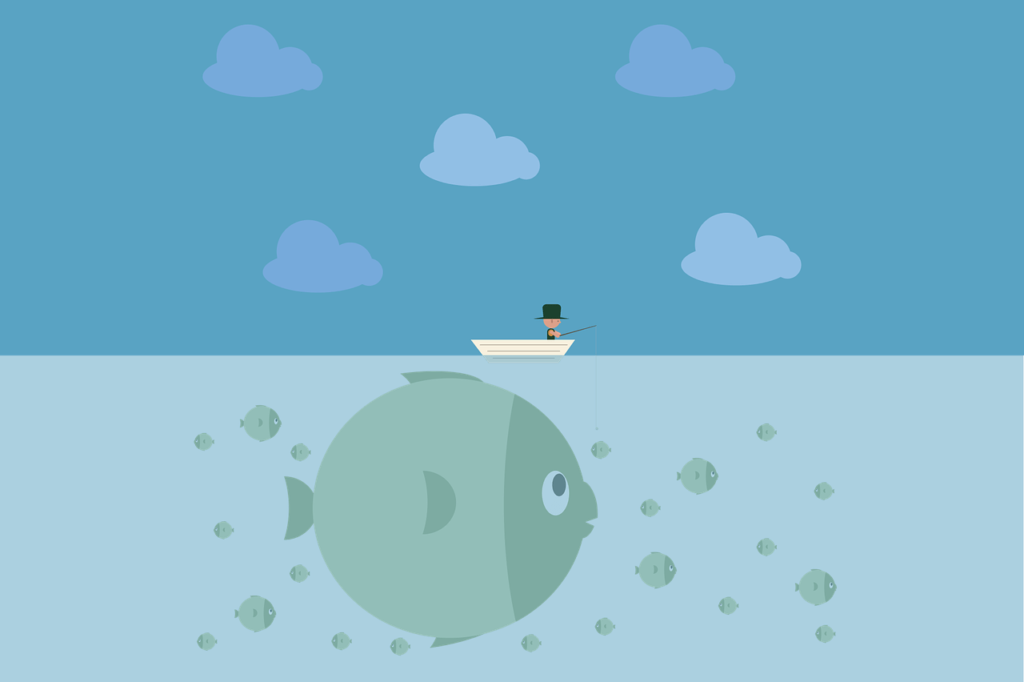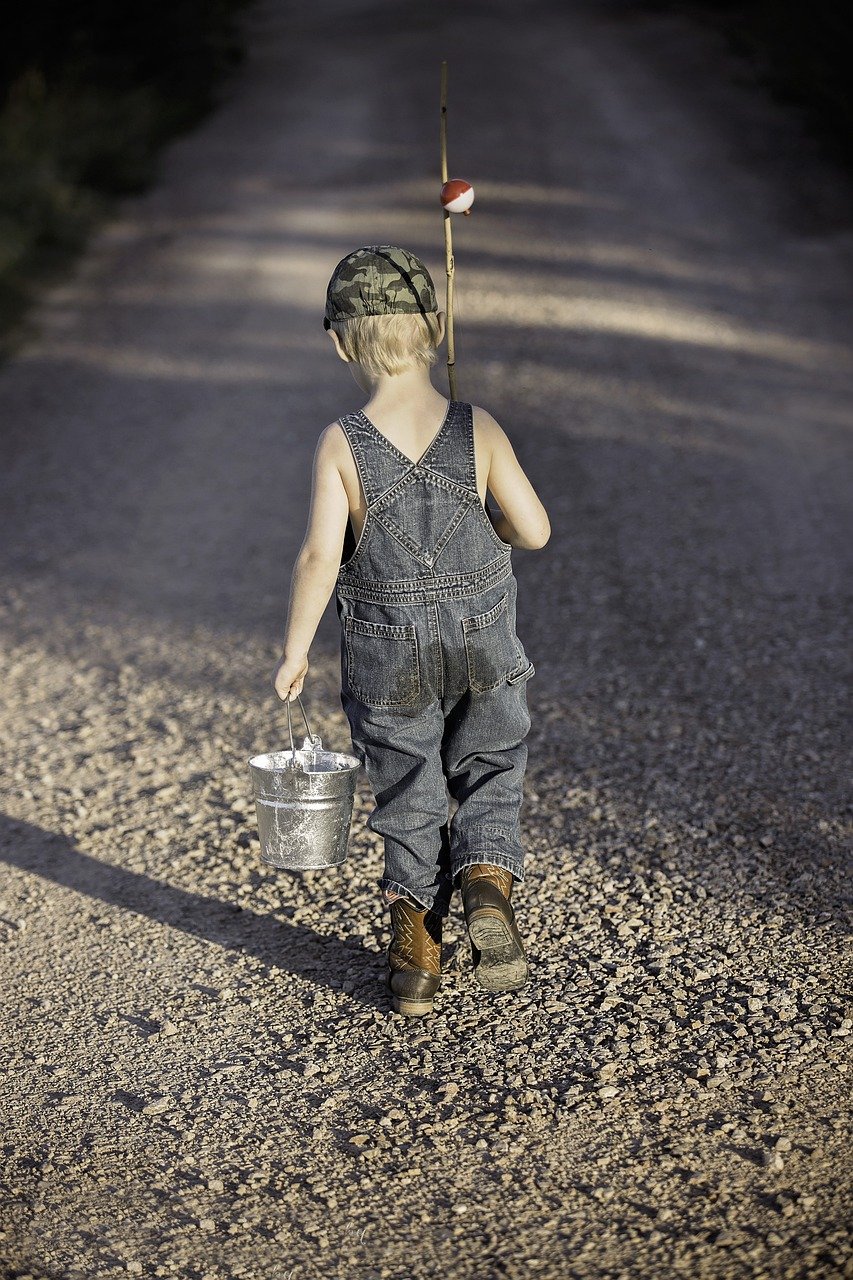In this enlightening piece, we’re thrilled to share with you the wonders of two of Utah’s premier fishing destinations: Lake Powell and Flaming Gorge Reservoir. Renowned for their breathtaking landscapes and abundance of fish, these locales promise unforgettable adventures for anglers of all levels. From the majestic red rock cliffs of Lake Powell to the cool, deep waters of Flaming Gorge Reservoir teeming with trophy fish, join us as we explore why these spots are cherished gems among fishing enthusiasts.

This image is property of pixabay.com.
Overview of Fishing in Utah
Utah, with its picturesque landscapes and abundant water bodies, offers a serene yet adventurous fishing experience. The state is rich in fish reserves and well-managed fishing spots that attract anglers from all over. Whether it’s fly fishing in a quiet stream or chasing trophy fish in a bustling reservoir, Utah’s diverse ecosystems cater to all.
Important fishing regulations in Utah
To ensure the health of Utah’s aquatic ecosystems and the enjoyment of all, there are several important regulations we must adhere to. These include having a valid fishing license, adhering to catch and release policies where mandated, and respecting bag and size limits for different species. Regularly checking the Utah Division of Wildlife Resources’ website for updates is advisable, as regulations can vary by location and evolve over time.
Species of fish in Utah
Utah’s waters are home to a wide variety of fish species. From the elusive brook trout in mountain streams to the challenging largemouth bass in warmer waters, there’s a fish for every type of angler. Notable mentions include the rainbow trout, cutthroat trout, kokanee salmon, and walleye, reflecting the state’s rich biodiversity.
Best seasons for fishing in Utah
The best fishing seasons in Utah largely depend on the species you’re after and the location. Generally, spring and fall provide the most favorable conditions for fishing in most lakes and rivers. During these times, fish are often more active and feeding, providing better opportunities for a successful outing. Winter ice fishing is popular in certain locations, offering a unique experience.
Introduction to Lake Powell
Nestled within the rocky landscapes of southern Utah, Lake Powell offers an unparalleled fishing and boating adventure. Its vast expanse of blue water contrasts dramatically with the surrounding desert and rock formations, creating a stunning backdrop for any activity.
Geographical location of Lake Powell
Lake Powell is located on the border between Utah and Arizona, within the Glen Canyon National Recreation Area. It spans over 186 miles in length when full and is the second-largest man-made reservoir in the United States by maximum water capacity.
Animal and Plant diversity of Lake Powell
The lake supports a diverse range of animal and plant life. Its waters and surrounding areas are habitations for species adapted to both aquatic and desert environments, including various fish species, birds, and unique desert flora. The surrounding ecosystem supports a fragile balance between aquatic and terrestrial life.
History and formation of Lake Powell
Created by the damming of the Colorado River with the completion of Glen Canyon Dam in 1963, Lake Powell was named in honor of Civil War veteran and explorer John Wesley Powell. It serves multiple purposes, including hydroelectric power production, water storage, and recreation, and has become a pivotal part of the region’s ecology and economy.
Fishing at Lake Powell
Fishing in Lake Powell is an adventure that draws anglers from near and far, offering both scenery and the promise of a rewarding catch.
Fishing regulations specific to Lake Powell
Anglers are required to comply with specific regulations while fishing in Lake Powell, including the possession of a valid fishing license from either Utah or Arizona. Special regulations apply to certain fish species, and catch and release practices are encouraged for sustainability.
Popular fishing spots within Lake Powell
Some of the most popular fishing spots in Lake Powell include Wahweap Bay, Bullfrog Bay, and the San Juan Arm. These locations offer access to a variety of fish species and beautiful scenery.
Common species of fish in Lake Powell
Anglers at Lake Powell can expect to catch species such as smallmouth bass, largemouth bass, striped bass, and walleye. The lake is renowned for its healthy striped bass population, offering exciting fishing opportunities.
Overview of recreational fishing tournaments at Lake Powell
Lake Powell hosts several recreational fishing tournaments annually, attracting competitive anglers with the promise of large catches and camaraderie. These events are not only fun but also promote conservation through catch-and-release practices.
Accommodations and Facilities at Lake Powell
Lake Powell offers a variety of accommodations and facilities, ensuring a comfortable stay for visitors.
Overview of camping and lodging facilities
Options range from campgrounds with basic amenities to full-service lodges and houseboat rentals, catering to different preferences and budgets. Visitors can choose to stay close to nature or enjoy the comforts of modern accommodations.
Boat rentals and marinas
The lake’s marinas provide services including boat rentals, fueling stations, and general supplies. Renting a boat is a popular way to explore the vastness of Lake Powell, with options suitable for fishing, leisure, or both.
Fishing supply stores around Lake Powell
Several supply stores around Lake Powell offer fishing gear, bait, and advice from local experts. These resources are invaluable for both novice and experienced anglers looking to maximize their fishing experience.
Other tourist sites around Lake Powell
Beyond fishing, visitors can explore natural wonders such as Rainbow Bridge National Monument, Antelope Canyon, and the Hite Overlook. The area’s rich history and striking landscapes provide plenty of opportunities for adventure and relaxation.

This image is property of pixabay.com.
Introduction to Flaming Gorge Reservoir
Flaming Gorge Reservoir is another gem within Utah’s fishing landscape, known for its scenic beauty and abundant fish populations.
Geographical location of Flaming Gorge Reservoir
Situated in northeastern Utah and extending into Wyoming, Flaming Gorge Reservoir is a part of the Flaming Gorge National Recreation Area. Its deep, cool waters are nestled within a stunning gorge, giving the reservoir its name.
Animal and plant diversity at Flaming Gorge Reservoir
The area around Flaming Gorge Reservoir is teeming with wildlife, including several fish species, mammals, birds, and plants unique to the high desert and mountainous environment. This biodiversity adds to the appeal of the region as a fishing and outdoor recreation destination.
History and formation of Flaming Gorge Reservoir
Formed by the construction of the Flaming Gorge Dam on the Green River in the early 1960s, the reservoir was created for hydroelectric power generation, flood control, and water storage. Its development has also fostered a thriving recreational area that attracts visitors year-round.
Fishing at Flaming Gorge Reservoir
Renowned for its trophy fishing, Flaming Gorge Reservoir presents anglers with an exciting and diverse fishing experience.
Fishing regulations specific to Flaming Gorge Reservoir
Fishing regulations at Flaming Gorge are designed to protect the fishery and ensure sustainable use. These include specific bag limits and size restrictions for different species. It’s important for anglers to familiarize themselves with the current regulations before heading out.
Popular fishing spots within Flaming Gorge Reservoir
Some of the reservoir’s most favored fishing spots include the area near the dam, the canyon regions, and the upper sections that reach into Wyoming. Each offers unique fishing prospects and scenic views.
Common species of fish in Flaming Gorge Reservoir
The reservoir is especially known for its kokanee salmon and lake trout, with the potential for trophy catches. Other species present include rainbow trout, brown trout, and smallmouth bass, providing a diverse fishing experience.
Overview of recreational fishing tournaments at Flaming Gorge Reservoir
Flaming Gorge Reservoir is the site of numerous fishing tournaments throughout the year, welcoming anglers of all skill levels. These events are great for those looking to test their skills against others while enjoying the camaraderie of the fishing community.

This image is property of pixabay.com.
Accommodations and Facilities at Flaming Gorge Reservoir
Visitors to Flaming Gorge Reservoir have a wide range of accommodations and facilities to choose from, ensuring a comfortable and enjoyable stay.
Overview of camping and lodging facilities
From rustic campgrounds to cozy cabins, there are lodging options to suit every taste and budget. Many sites offer stunning views of the reservoir and surrounding wilderness.
Boat rentals and marinas
With several marinas located around the reservoir, boat rentals are readily available. These facilities also provide fishing supplies and other services to help visitors make the most of their time on the water.
Fishing supply stores around Flaming Gorge Reservoir
Local fishing supply stores are staffed by knowledgeable individuals keen on helping anglers find the right gear and bait for the fish they’re targeting. They’re also excellent sources of advice and up-to-date information on fishing conditions.
Other tourist sites around Flaming Gorge Reservoir
Beyond fishing, the area around Flaming Gorge offers a wealth of outdoor activities, including hiking, wildlife viewing, and scenic drives. The reservoir’s clear blue waters are also ideal for swimming, kayaking, and water skiing, providing a refreshing counterpoint to a day of fishing.
Safety considerations for fishing in Utah
Utah’s diverse fishing locales pose unique challenges and require anglers to be prepared to ensure their own safety and the protection of the environment.
Weather patterns and their implications on fishing
Utah’s weather can be unpredictable, with quick changes that can affect fishing conditions. Anglers should check the weather forecast before heading out and be prepared with appropriate clothing and gear.
Water safety tips
Safety on the water is paramount. Always wear a life jacket, be mindful of water levels and currents, and never fish alone in remote areas. Knowing how to swim and being aware of your surroundings can prevent accidents.
Wildlife considerations
Utah’s wilderness is home to a variety of wildlife, including some that can be dangerous. Practicing caution and respect for wildlife ensures a safer experience for everyone. This includes securing food and trash to avoid attracting animals to your campsite or fishing spot.
Fishing gear and techniques for Lake Powell and Flaming Gorge Reservoir
Success in Utah’s waters often comes down to using the right gear and techniques.
Choosing the right fishing gear
The gear required can vary depending on the species targeted and the fishing location. Lightweight rods and fly fishing gear are popular for trout in streams, while heavier tackle may be necessary for larger fish in reservoirs. Local supply stores can provide specific advice tailored to your needs.
Effective fishing techniques for Utah’s fish species
Understanding the habits and preferences of the fish you’re targeting is crucial. Techniques such as trolling, fly fishing, and bait fishing are all effective in Utah’s waters, depending on the conditions and species. Experimentation and local knowledge can greatly enhance your fishing experience.
Conservation and Sustainability in Utah’s Fishing Industry
The beauty and abundance of Utah’s fishing spots are maintained through careful conservation and sustainability practices.
Environmental impact of fishing in Utah
While fishing is a cherished activity, it does have an impact on Utah’s natural waterways and fish populations. Efforts to mitigate this include habitat restoration, fish stocking, and the enforcement of fishing regulations.
Utah’s sustainability policies related to fishing
Utah has implemented policies aimed at preserving both the sport of fishing and the natural resources it depends on. These include limits on catches, size restrictions, and the development of catch-and-release areas, all intended to ensure future generations can enjoy fishing in Utah’s waters.
How anglers can contribute to sustainability and conservation efforts
As anglers, we play a direct role in conservation efforts. Practicing catch and release, respecting regulations, and participating in habitat cleanups are ways we can contribute. Additionally, educating others about the importance of conservation helps spread awareness and ensure widespread support for sustainability initiatives.
By understanding and actively participating in conservation, we can all help maintain the pristine condition of Utah’s waters and the abundance of its fisheries for years to come.





